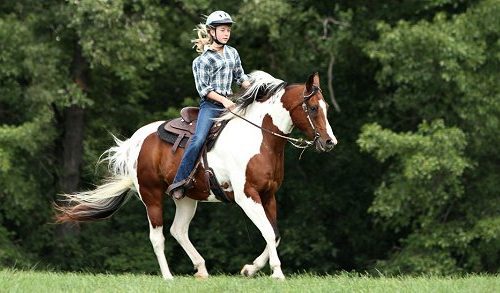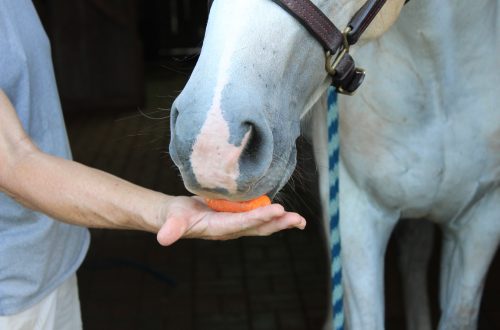
horse logic
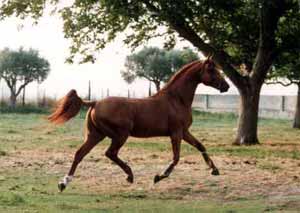 Proper work with a horse is a rather boring sight for outsiders. It seems that nothing is happening and the rider just rides for pleasure. It is much more spectacular to watch a man tame a recalcitrant horse, showering it with numerous blows of the whip.
Proper work with a horse is a rather boring sight for outsiders. It seems that nothing is happening and the rider just rides for pleasure. It is much more spectacular to watch a man tame a recalcitrant horse, showering it with numerous blows of the whip.
However, the physical superiority of a human over a horse does not mean that the horse is completely under your control. In order to teach a horse something, it is necessary to work more with the head than with the whip.
First and foremost, training a horse starts with understanding how the horse’s brain works. You must clearly understand what their logic is. The connection between the events taking place in the horse’s head and the reaction to them does not obey our human logic.
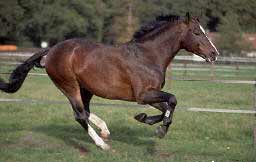 Sometimes it seems to us that the horse is stubborn and does not want to follow our orders, but in fact it can be just scared. As a result, she simply closes on this element, and getting her out of this state is much more difficult than initially listening to her horse.
Sometimes it seems to us that the horse is stubborn and does not want to follow our orders, but in fact it can be just scared. As a result, she simply closes on this element, and getting her out of this state is much more difficult than initially listening to her horse.
The fact is that the psychology of a horse is the psychology of an animal victim. Vision is the first and main indicator of impending danger, and only then comes the awareness of what is happening in the head. I will try to explain: when we approach a horse, for example, we just want to stroke it, it does not understand our intentions. She only observes our actions and movements and decides whether it is safe to remain in place or whether we need to urgently flee.
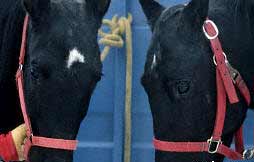 Let me give you one more example. Imagine a herd of gazelles grazing and a leopard approaching them. The whole herd takes off running until the predator catches one of the gazelles. Once the gazelle is killed and the hunt is over, the leopard’s muscles relax. The leopard picks up the prey and calmly drags it through the entire herd of gazelles, which no longer perceives it as a hunter. Depending on how the movements of the leopard changed from rapidly tense to completely relaxed, the perception of gazelles also changed. The cat’s body language in the first case conveyed the message “I am a hunter”, and in the second – “I am just a leopard that walks among you.”
Let me give you one more example. Imagine a herd of gazelles grazing and a leopard approaching them. The whole herd takes off running until the predator catches one of the gazelles. Once the gazelle is killed and the hunt is over, the leopard’s muscles relax. The leopard picks up the prey and calmly drags it through the entire herd of gazelles, which no longer perceives it as a hunter. Depending on how the movements of the leopard changed from rapidly tense to completely relaxed, the perception of gazelles also changed. The cat’s body language in the first case conveyed the message “I am a hunter”, and in the second – “I am just a leopard that walks among you.”
So, your first task is to make the horse perceive you as “just a leopard”, and not as a “hunting leopard”. You should not appear as an attacking predator to your horse. The next task, after the horse has accepted you into his “herd”, is to win the position of the leader. As you know, the herd obeys the leader mare, which controls the entire herd and makes decisions. She transmits conditioned signals with her body language, which is understandable to other individuals. In the same way, you use body language to get the horse’s attention to you in the first place. For example, try to play with the horse, that is, use the actions that she is used to in the herd. For example, scratching at the withers, etc.
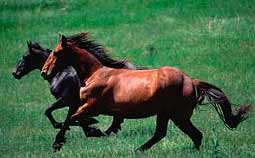 Here is a clear example of misunderstanding when the rider tries to interpret the actions of the horse from human positions. Everyone knows that if a horse is frightened or offended, its head is pulled up and all the muscles are tense. From the rider’s point of view, the horse should be seated on crossovers or work on a blind line, so that the head is always lowered until the horse “understands” the required head position from him. However, if the horse is tense because of the actions of the rider that are incomprehensible or frightening to him, then the problem will only get worse. From the point of view of the horse, the interchange or the sheet will be another threat or attack coming from a person. If the actions of the rider were initially understandable to the horse, then, having relaxed, she would lower her head herself, obeying the purely mechanical effect of the snaffle.
Here is a clear example of misunderstanding when the rider tries to interpret the actions of the horse from human positions. Everyone knows that if a horse is frightened or offended, its head is pulled up and all the muscles are tense. From the rider’s point of view, the horse should be seated on crossovers or work on a blind line, so that the head is always lowered until the horse “understands” the required head position from him. However, if the horse is tense because of the actions of the rider that are incomprehensible or frightening to him, then the problem will only get worse. From the point of view of the horse, the interchange or the sheet will be another threat or attack coming from a person. If the actions of the rider were initially understandable to the horse, then, having relaxed, she would lower her head herself, obeying the purely mechanical effect of the snaffle.
People who try to give the horse a task right away and then punish the animal if it doesn’t do it are on the wrong track. They think they are teaching the horse a lesson, like in school. However, the horse does not understand their “remarks and deuces”, and perceives the punishment as a threat. In fact, there is no learning involved. Using this technique, you only show the horse that the one who is cooler and stronger will win. In this way, you prevent the horse from relaxing and gradually and logically mastering unfamiliar elements.
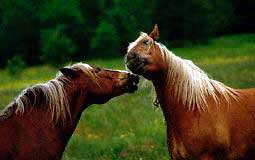 In addition, it is necessary for trainers to realize that horses are not capable of recognizing or understanding human emotions and feelings. Namely, our emotions often create conflict situations between horse and rider. If we do not calculate in advance and control our actions, then we are at the mercy of our instincts.
In addition, it is necessary for trainers to realize that horses are not capable of recognizing or understanding human emotions and feelings. Namely, our emotions often create conflict situations between horse and rider. If we do not calculate in advance and control our actions, then we are at the mercy of our instincts.
Since people, and primarily men, are predators by nature with a corresponding fighting instinct, therefore the first reaction to a threat is an attack. And the more dangerous the threat, the stronger the defensive reaction, that is, the aggressive attack. Often it turns out that riders who fight with their horses are not able to control their own horse at all.
In your training, you must move forward step by step in a methodical manner, doing actions that can get the horse’s full attention to you and control that attention without frightening or attacking the horse. To train a horse is to dominate him mentally, not physically.
 mother.of.smile 13th of June 2011
mother.of.smile 13th of June 2011great article!!!!! To train a horse is to dominate him mentally, not physically.!!! Answer
- Zhofrey 24 March 2015 city
When I try to scratch the horse’s withers, neck, mane, he starts to lift his head and tries to pinch me, drive me away? Response




